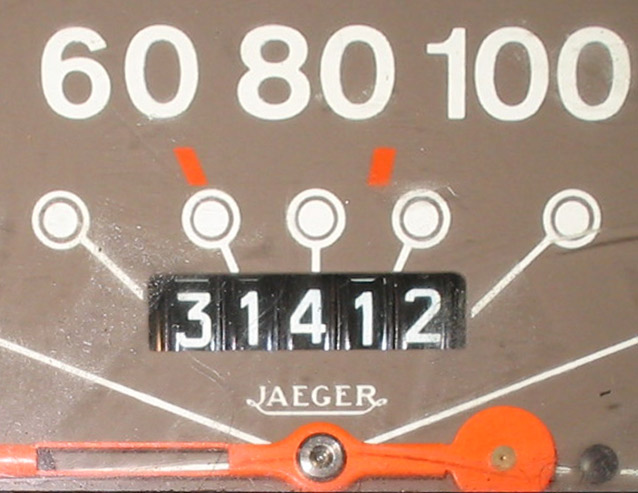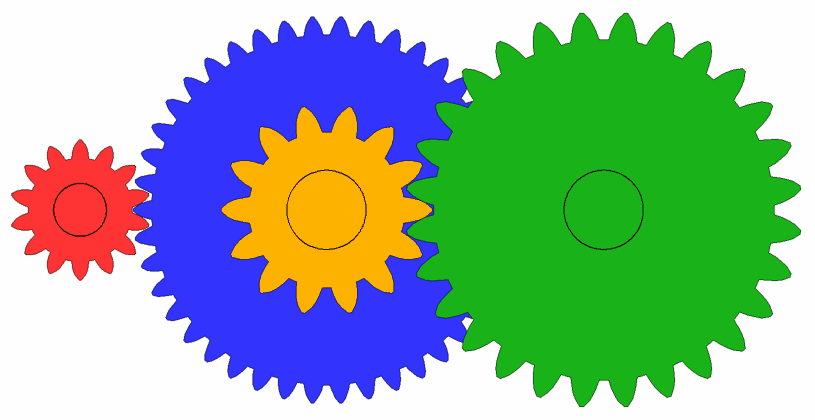06. How Odometers Work
How Odometers Work
A mechanical odometer works by coupling the rotation of a vehicle's wheels to the rotation of numbers on a gauge like this:

Each of these numbers is written on a dial which has the numbers 0 - 9 written on it.
But that last digit on the gauge needs to rotate very slowly compared to the rotation rate of the vehicle's tires. Typically, a car's wheels will have to complete 750 rotations to move 1 mile. And since there are 10 digits on each dial, that means the last digit should only complete one rotation after the wheels have completed 7,500 rotations!
We can even express this mathematically:
This reduction of rotation rate is accomplished through gear reduction. If you look at the blue and green gears in the image below you should get a sense for how that works.

You don't need to remember any of this. Digital odometers don't even work this way (though they are pretty cool too).
I just think animations of gears are too fun to pass up!